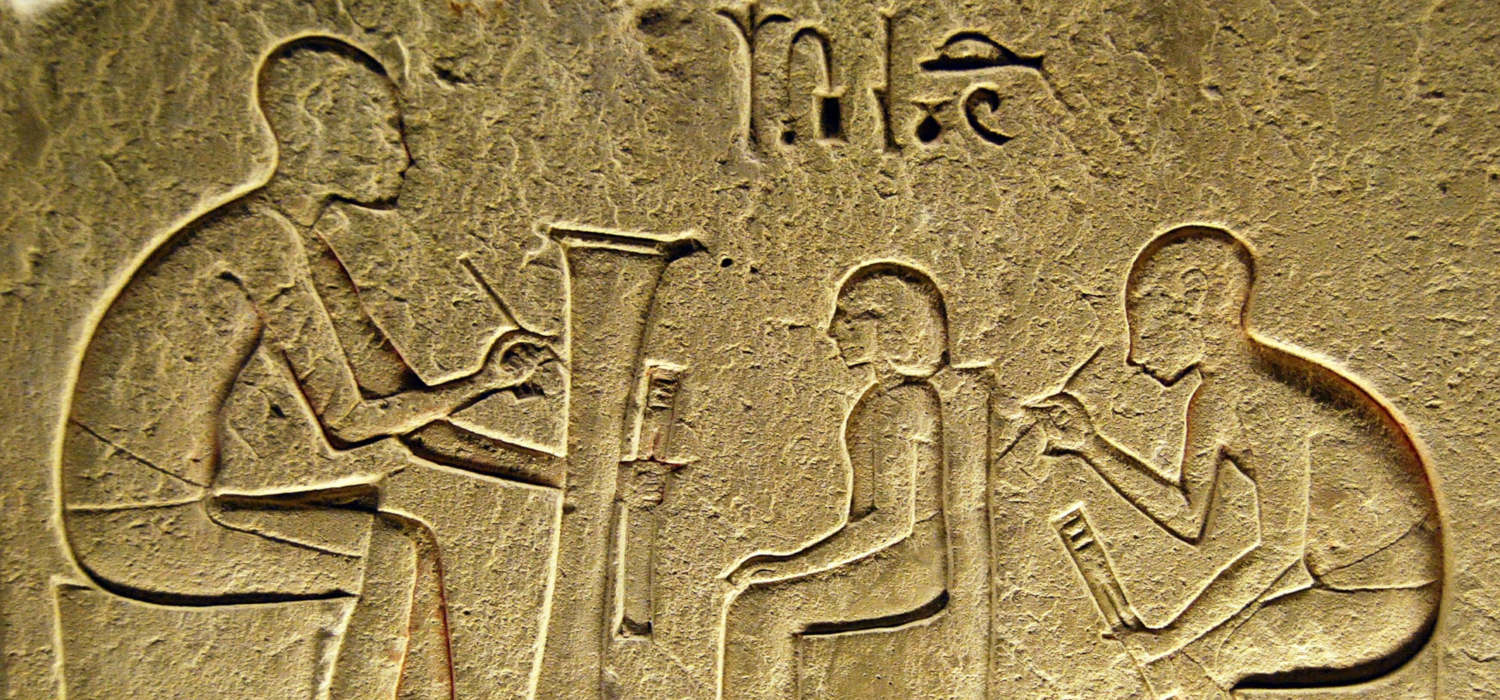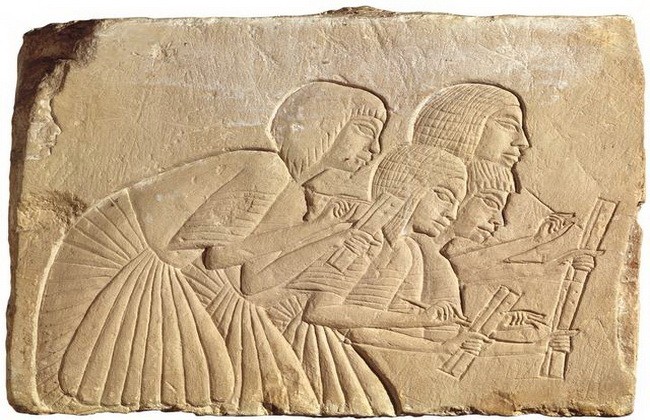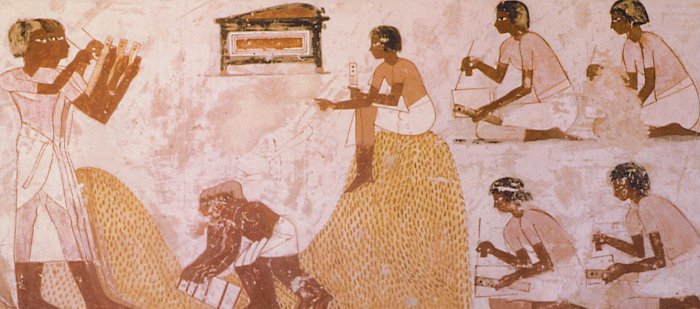by Brendan Heard, Contributing Writer, Classical Wisdom
We love to learn about ancient Egypt today…but what did the Egyptians learn about? Was their education system at all like the ancient Greek education system?
It is not possible for us today to know the complete details of Ancient Egyptian education, or to trace precisely its history. We do, however, know some things, and there is clear evidence of a state teaching system which existed throughout the many long-lived dynasties of the Pharaohs. It has been speculated that education began (along with recorded Egyptian history) with the Old Kingdom of 3000 BC. There are some remarkable similarities to our system today, and archaeological evidence has verified images of children seated at desks in classrooms, taking instruction from a teacher who is seated at a larger desk.
From what we know, their actual curriculum was not unfamiliar, consisting of common subjects with particular attention paid to: mathematics, astronomy, geometry, reading, writing, geography, music, sports, manners, medicine, and moral instruction. Education was held in high regard, and typically anyone who had the means sent their children to school when they reached a certain age.
Due to the limited number of schools, lower class people often could not send their children, and they were educated to the best of their ability at home. Girls also were not permitted to go, as education in these things was not considered important for them. They were instructed at home by their mothers, with the expectation that they would become wives and mothers themselves, tutored in the arts of cooking, sewing, religion, and reading. While girls could not go to school, most could be given advanced instruction in what was considered suitable disciplines, such as dancing, weaving, and baking. Girls from noble families had the privilege to be taught politics, history, the arts, as well as reading, writing, and ciphering. Many were also given instruction on supervising household servants and slaves.
There was an education option for artisans and the working class, associated with craft guilds (an unbroken classical tradition which only ended in the 19th century). At the age of 14, middle- and lower-class boys left formal education to work as apprentice farmers, masons, carpenters, etc, to their fathers. For both poor and rich, education of some sort was necessary, and generally the course of that education (craft-school, home-school, elite-school) was ordained by your family’s occupation, which the children were expected to maintain. For the elite of Egyptian society, royal offices remained in the same families for generations, as did farmland to farming families. Thus, it was customary for children to be instructed in what was considered the family discipline. A son was commonly referred to as ‘the staff of his father’s old age’, meaning he assisted him in the performance of his duties.
Schooling generally began at the age of 7. The same as today, school started in the morning with a midday break before commencing for the rest of the afternoon. School supplies for younger students consisted of a wooden writing tablet which could be wiped clean, and educational books (called Kemty) were written vertically rather than horizontally. Older students were permitted papyrus. The schools were generally part of a larger religious or government complex, and were taught either by priests or by scribes. Priests oversaw religious lessons, and scribes the secular lessons.
There were village ‘elementary’ schools that instructed a preliminary education, and these were followed by specialized schools for ‘secondary’ education. Typically, specialization instructed the necessary disciplines for common ‘middle class’ roles, such as doctors, scribes, etc. One of the few careers with upward mobility was as a scribe.
Throughout the education system there was a strict hierarchy, with different schools for each class, and this hierarchy continued into professional life, with the Prince’s School at the top (where the nobles and Pharaoh’s sons were educated). They themselves were instructed by the Vizier, in specialized higher education which was focused on producing skilled individuals. In that sense expectations were the same throughout the hierarchy. Young boys who showed extreme promise were often allowed to attend The Prince’s school as well, and for them this was a great honor.
Archeological discoveries have shown how Egyptian classrooms resembled modern ones, with school rules written on the walls. Punishment could be severe, including beatings and spending time in stocks. Boys who failed to learn their trade well were often sent away and forced to set up their life in a new town.
In Ancient Egypt, religious education and philosophy were taught alongside secular subjects, impressing upon students a strong moral foundation. They believed you became wise by following moral principles, such as truth.
There is no doubt ancient Egyptians held education in high regard and saw it as a privilege. It is a testimony to their success.












One comment
You can explore Egypt all your life and find a lot of mysteries. I really like this country, it is unique in its own way. In addition, the desert is very mysterious, it hides many secrets under itself. When I was studying, I found where to buy research paper for college on the topic of Egypt, I used https://paperell.com/buy-college-research-paper for this. At the time, I wasn’t that interested in the topic. But after my work was sent to me, I read it and realized that it was interesting for me to read it. Since then, everything has changed in my life.
Trackbacks
Our apologies, you must be logged in to post a comment.